Feeling the heat? Where to find relief
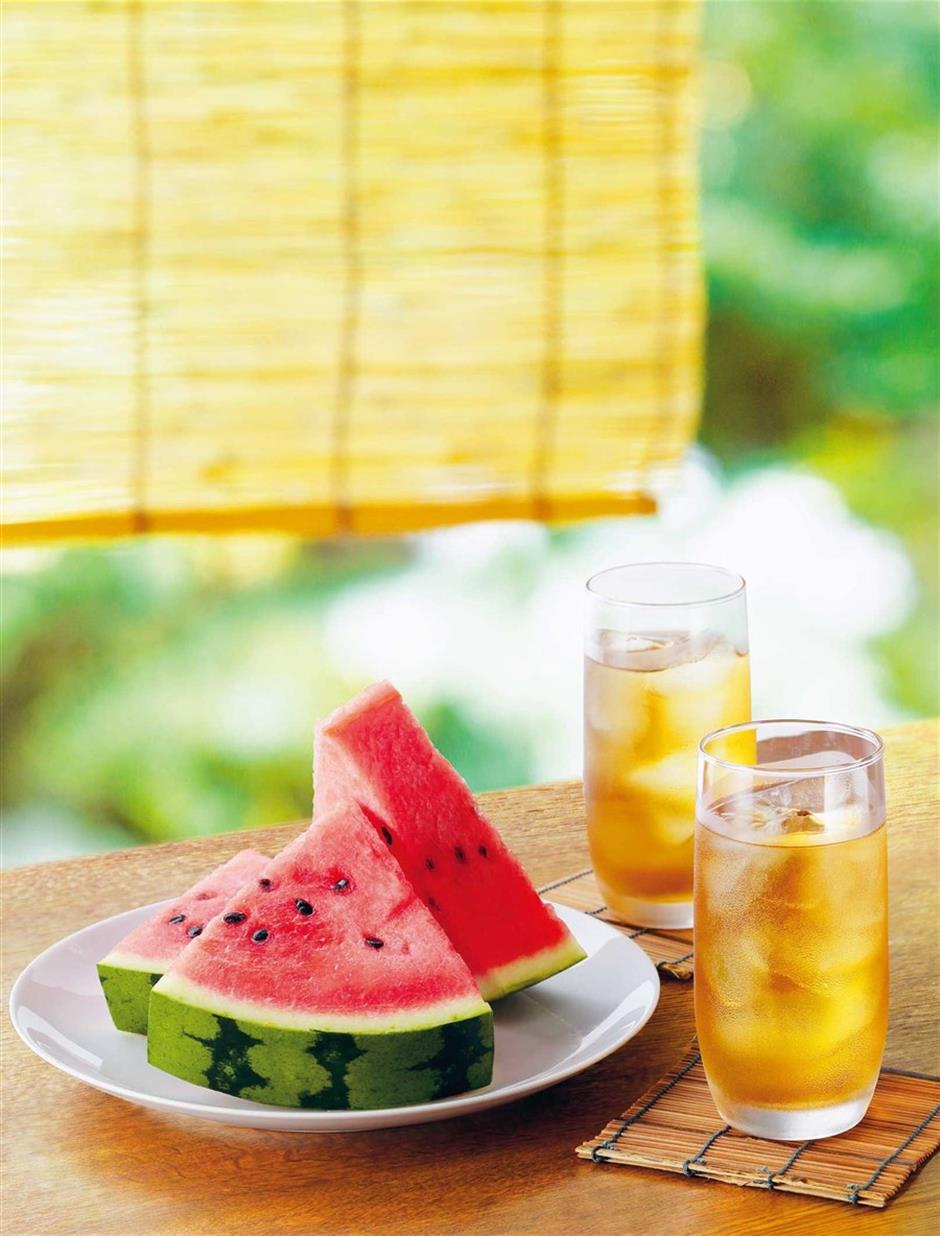
Chilled watermelon
How to keep your cool on hot, sticky summer days
With Shanghai sweltering under the hottest summer in history, many residents are turning to tried-and-true traditional foods and remedies to keep cool, even in the era of air conditioning.
We explore some of the ways to relieve the energy-sapping effects of heat and humidity.
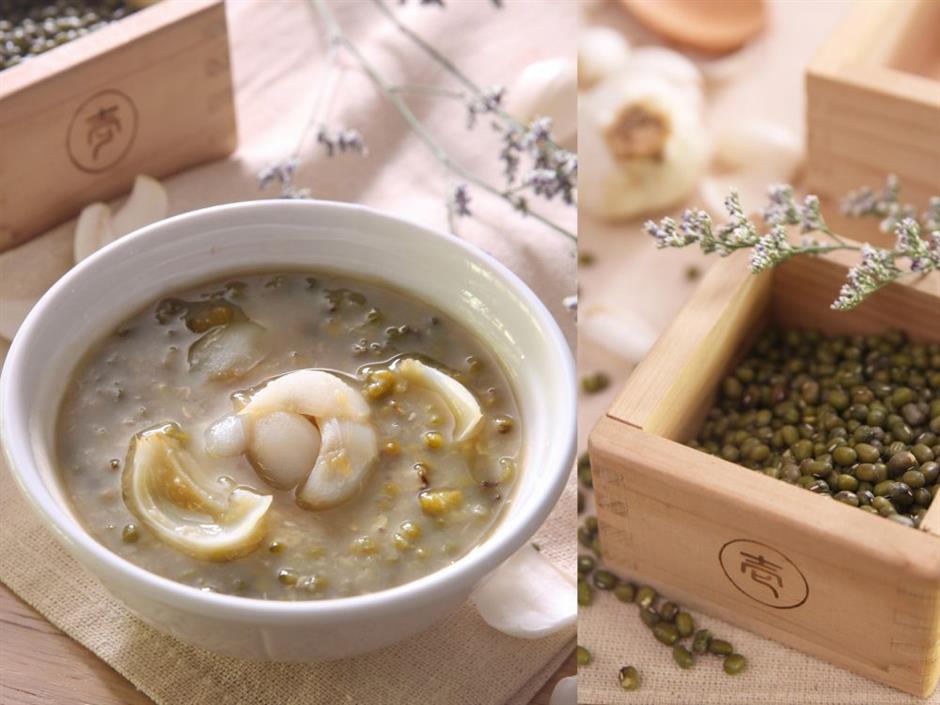
Mung bean soup
Favorite duo: mung bean soup and chilled watermelon
The top relief combo in China is mung bean soup and chilled watermelon, two crowd favorites to keep temperature down and the body hydrated.
Mung bean soup is made from the dried beans by boiling them in water until they soften. Cooked mung beans turn yellow and crack slightly. They are served plain or with some rock sugar.
This soup is said to clear heat and toxicity from the body. Some believe it can also eliminate anxiety when served chilled.
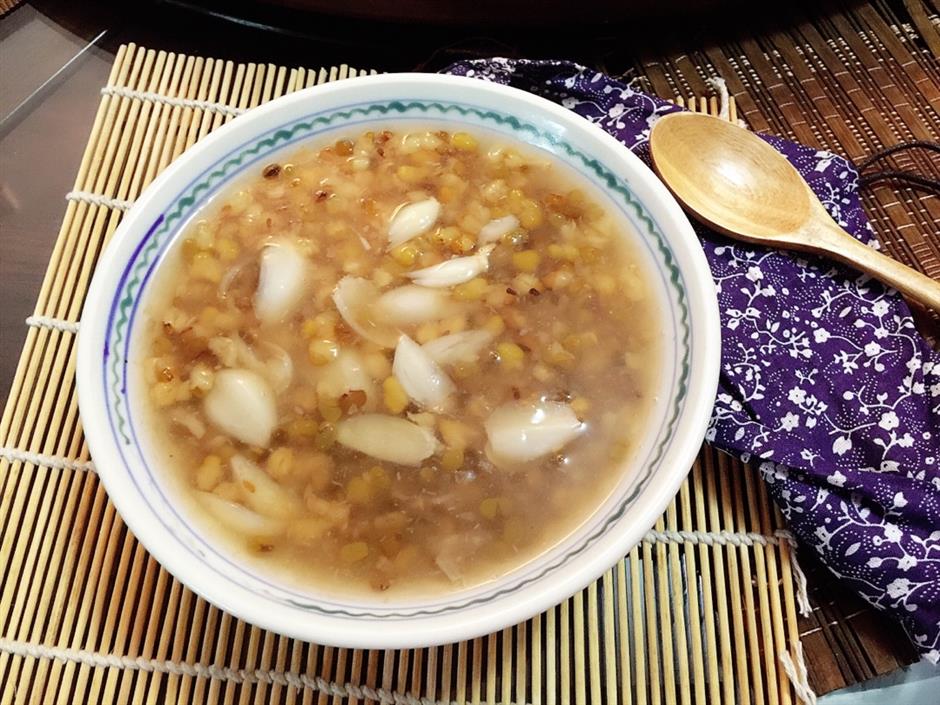
Mung bean soup
Various versions of mung bean soup can be found across China. Classic recipes include mung beans with a form of millet called Job’s tears, or with dried lily bulbs, pumpkin, kelp or winter melon.
Mung bean with kelp is actually a classic tang shui (sweet soup) dish in Cantonese cuisine. It’s flavored with dried orange peel and rock sugar.
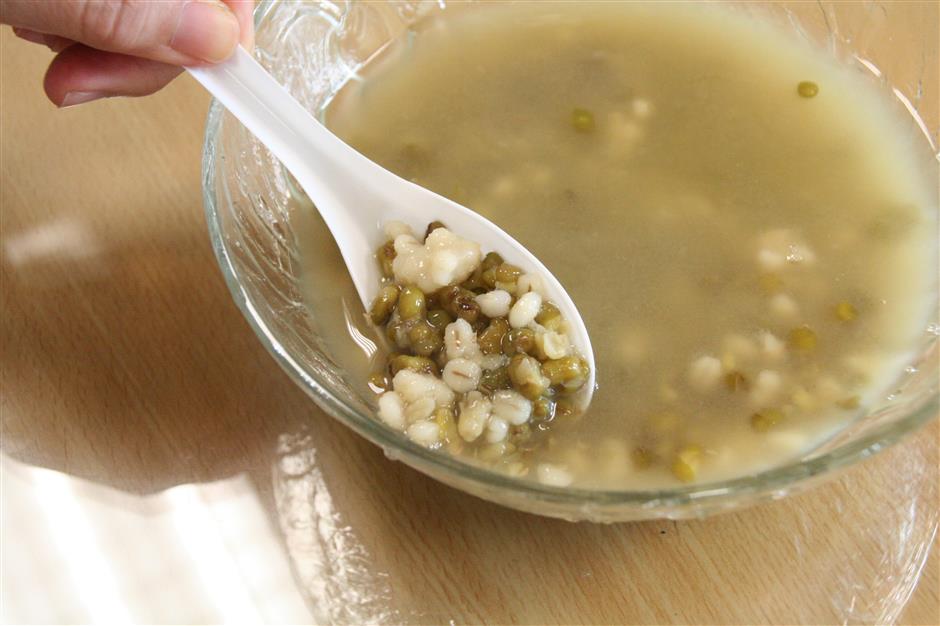
Mung bean soup
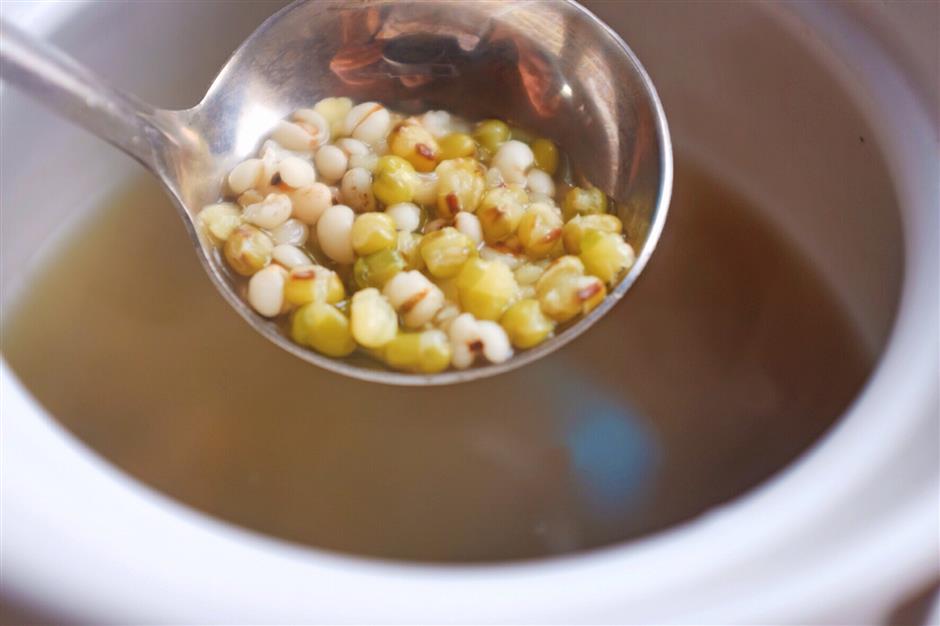
Mung bean soup
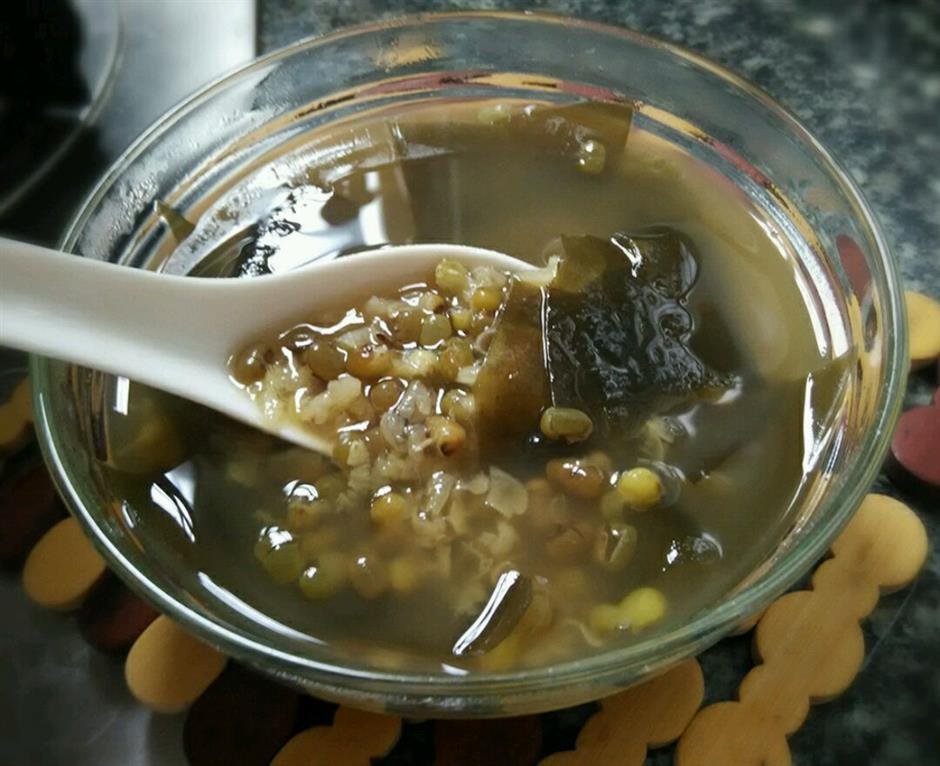
Mung bean soup
Cooking time is essential in making mung bean soup. Advice: do not overcook the beans to keep the soup greener and clearer.
Chilled watermelon is always a popular summer treat. Eating crisp, juicy melon is not only refreshing but it also helps keep the body hydrated. Since it does contain high levels of fructose, it should be enjoyed in moderation.
Simple cold dishes
For Shanghai locals, cold noodles, cold wonton and sliced cold chicken are three staples of summer cuisine. And, best of all, they don’t require working hours in a hot kitchen.
Cold noodles come in many variations across China. In Shanghai, the dish is traditionally served with creamy peanut sauce, chicken or tender pork loin, shredded cucumber, shredded egg sheet and green pepper.
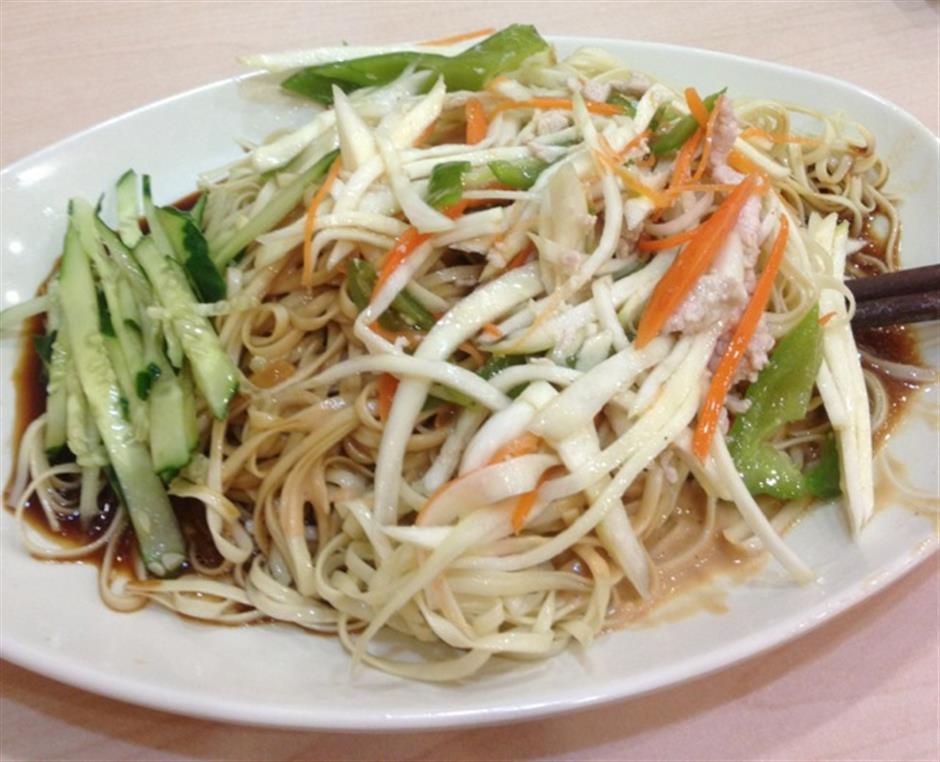
Shanghai cold noodles

Shanghai cold noodles

Shanghai cold noodles
The noodles used in the Shanghai style are steamed before being scalded in boiling water. That enhances their elasticity. Salt and cooking oil can be added into the boiling water to keep the noodles from gumming together. The noodles are tossed with some sesame seed oil and left to cool.
This technique is different from the procedure of boiling noodles and then chilling them in iced water. It keeps the noodles drier and more fragrant. The noodles can also be used in stir-fried dishes like green pepper with pork and shredded eel.
Shanghai-style cold wonton is a sister of cold noodles.
Large wontons traditionally served in soup are boiled and then chilled in iced water before a fragrant dressing of peanut sauce, vinegar and chili oil is added.
Toppings like chicken meat can also be paired with cold wonton. Erguang Wonton (耳光馄饨) is a Shanghai eatery well-known for its cold wonton.

Shanghai-style cold wonton
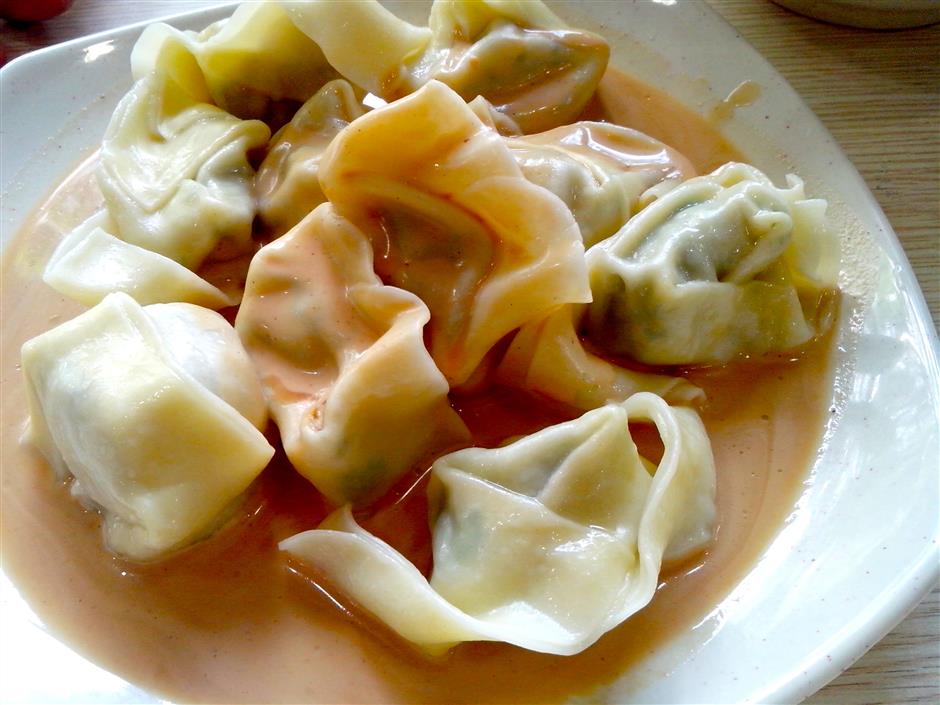
Shanghai-style cold wonton
Shanghai-style baizhanji (白斩鸡), or sliced cold chicken, is slightly different from the white-sliced chicken in Cantonese cuisine.
The Shanghai variation uses sanhuang chickens from Pudong, which are cooked without the marinating or curing processes.
Bring a pot of water seasoned with ginger and scallions to boil. Holding the chicken by the neck, dip the body in boiling water three times to secure its shape and eliminate any residue blood. The chicken is then simmered over low heat for 30 to 40 minutes, depending on the size.
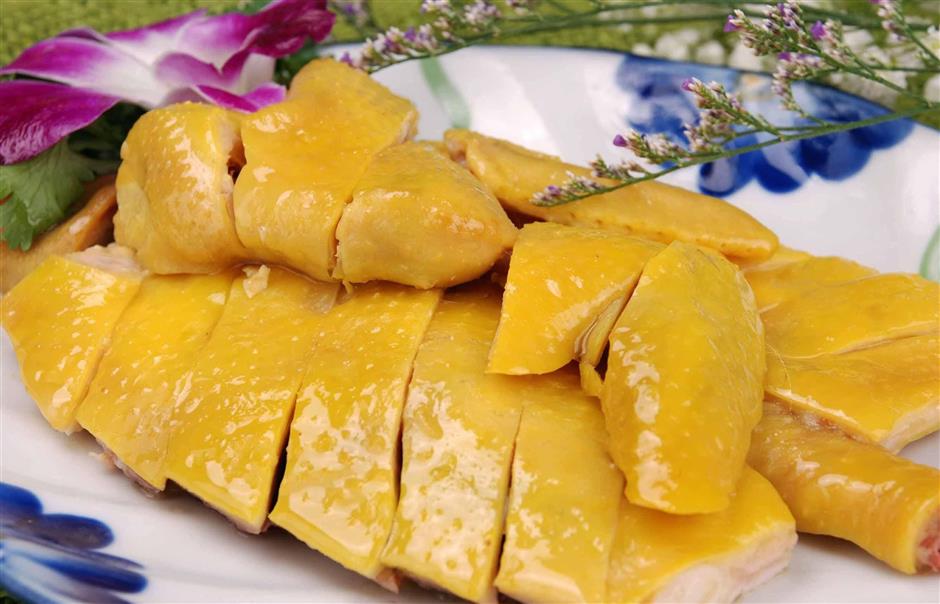
Shanghai-style baizhanji (白斩鸡)

Shanghai-style baizhanji (白斩鸡)
Remove the chicken from the heat and put it into chilled water to tighten the skin and lock in the juices. Then, with a sharp knife and steady cutting board, chop the chicken into smaller pieces and serve with a dipping sauce.
The 70-year-old Xiao Shaoxing on Yunnan Road is a favorite local eatery for baizhanji. It serves traditional sliced cold chicken as well as classic noodles with scallion oil and chicken congee.
Boiled green soybean pods are a favorite local snack in summertime. When the soybeans are in season, Shanghai families boil them in salted water or marinate them in a yellow wine sauce.
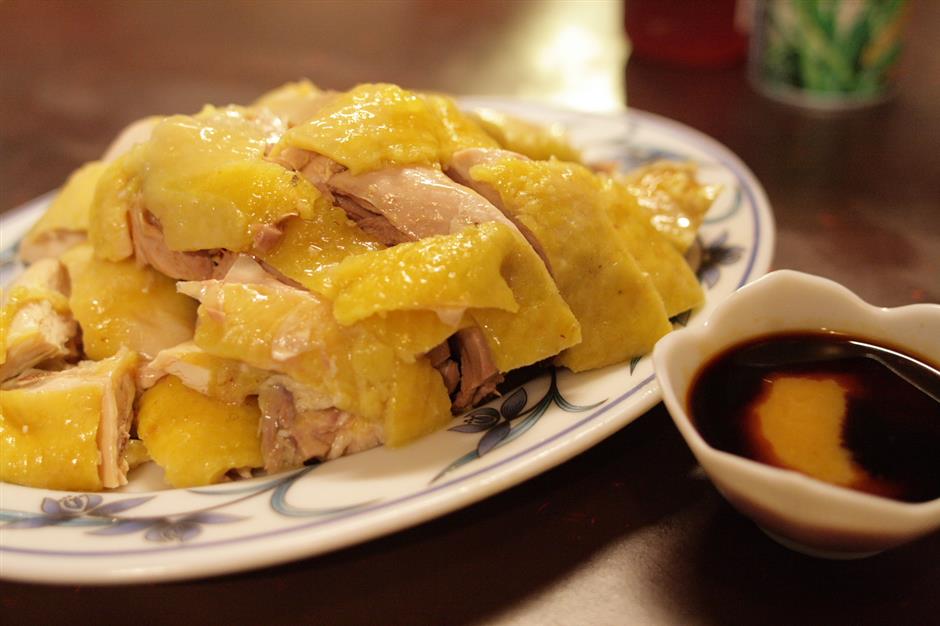
Baizhanji from Xiaoshaoxing
Summer remedies
Lotus leaf, according to traditional Chinese medicine, clears the body of the effects of heat and humidity. The fresh leaves can be boiled in water to make a tea or steamed with a rice filling. Dried lotus leaves are also sold in traditional pharmacies.
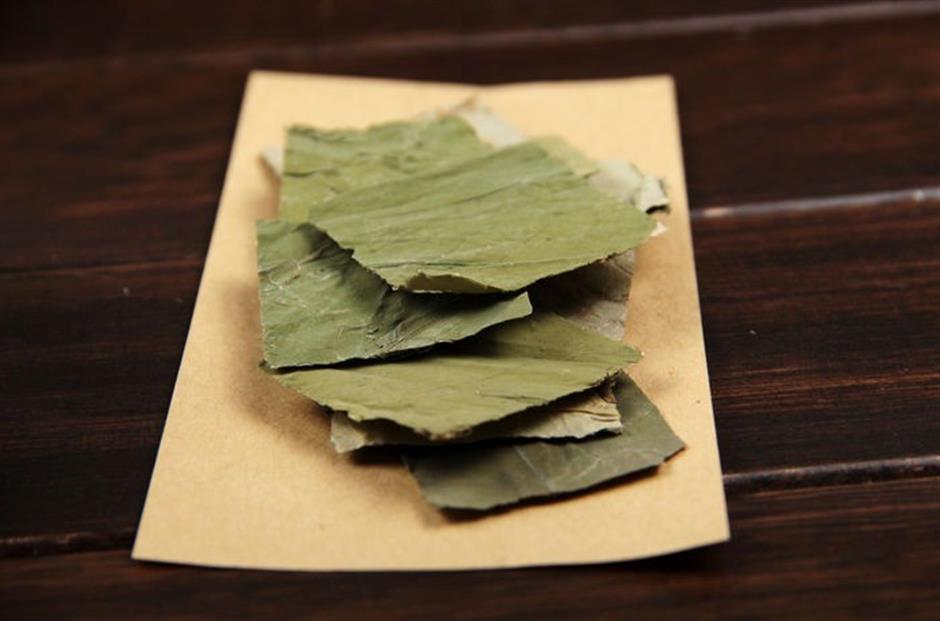
Lotus leaf
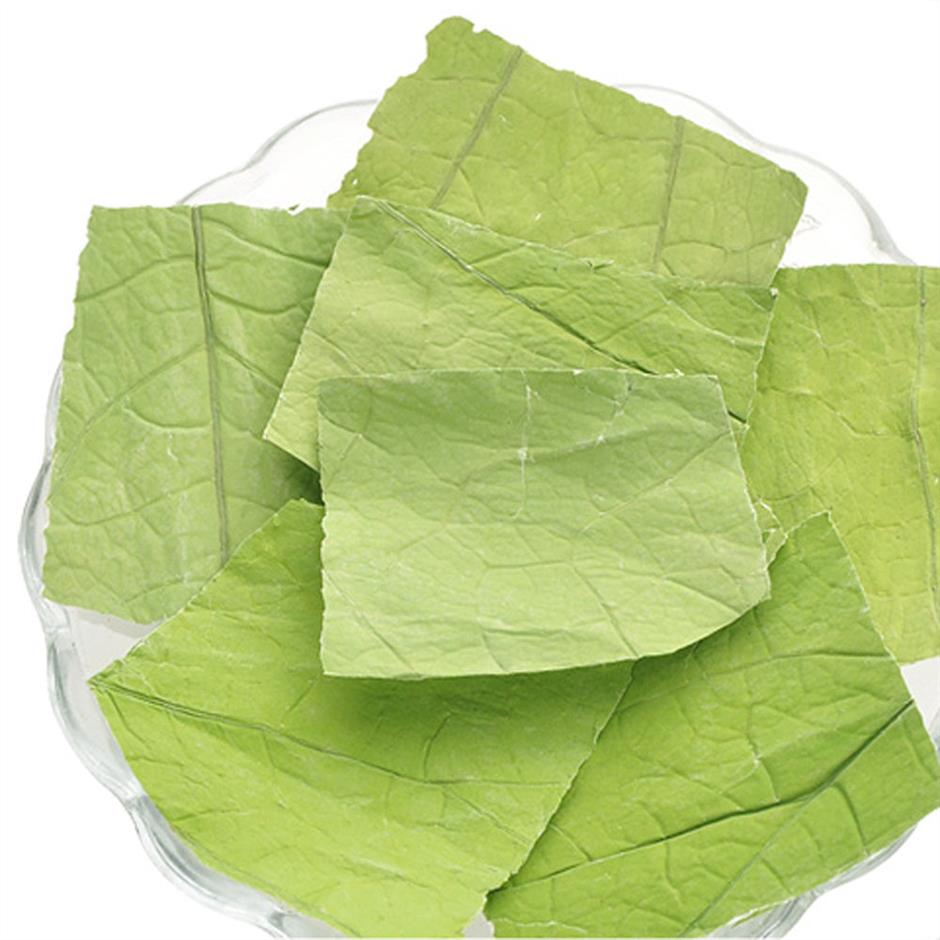

The lotus leaves can be boiled in water to make a tea.
Bitter melon is a summer vegetable one either loves or hates. The long melon with the bumpy surface and distinctly bitter taste is rich in amino acids, vitamins and minerals.
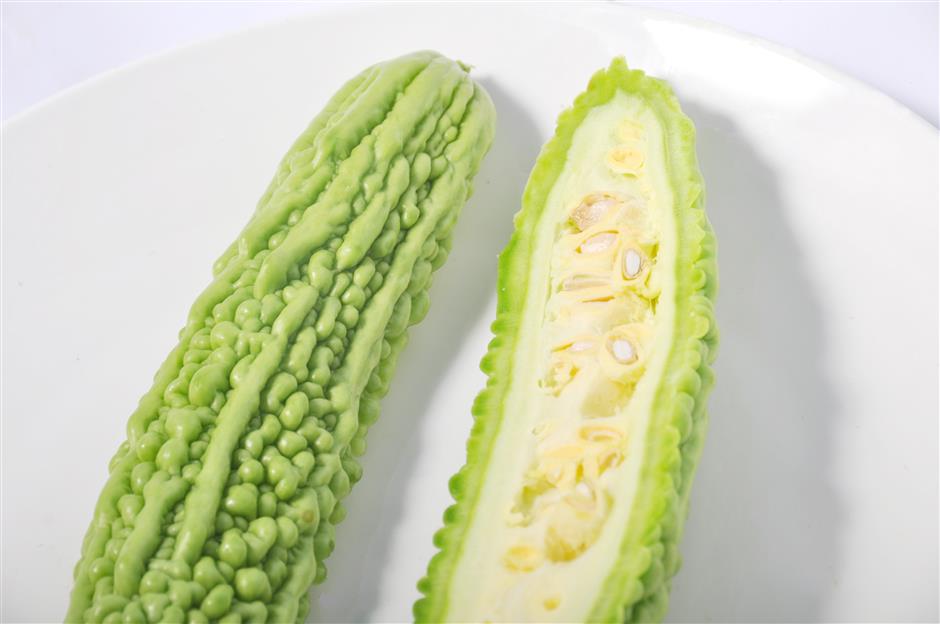
Bitter melon
There are many ways to cook the melon to reduce the bitterness, including scalding in hot water or tossing in a sweet and sour dressing as a cold starter.
The combination of bitter melon and Sprite has become quite popular in Shanghai. The sweet, lemony flavor of the soda neutralizes the bitterness of the vegetable.
To prepare, remove every last bit of the white flesh inside, scald the melon slices in boiling water and remove them the moment the color turns bright green.
Let the melon soak in room-temperature water for five minutes, prepare two slices of lemon and arrange everything in a bowl with some honey.
Then pour a bottle of Sprite over the mixture and let chill in the fridge for at least two hours. Goji berries can be added as a topping for an extra splash of color.
Green tea is the preferable beverage for summertime because it is refreshing and said to energize the body.

Green tea
Heatstroke is the predator of the summer season.
The Chinese have three weapons to deal with it: fengyoujing (风油精), qingliangyou (清凉油) and huoxiang zhengqi liquid or tablet(藿香正气水/片).
Fengyoujing is commonly used to treat insect bites and stings, and headaches and dizziness caused by too much exposure to heat. Its ingredients include menthol, methyl salicylate, camphor, eucalyptus oil and eugenol. The Chinese people often rub some fengyoujing under their nose and on their temples.
Qingliangyou, on the other hand, is a cooling balm containing similar ingredients. The menthol-based balm can be rubbed on the temples to relieve fatigue and refresh the mind.
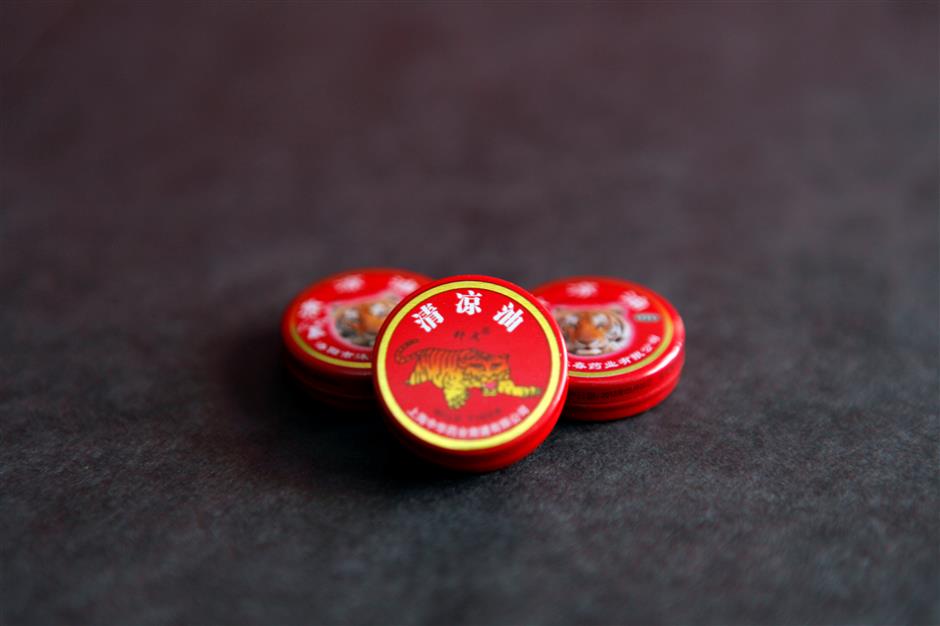
Qingliangyou (清凉油)
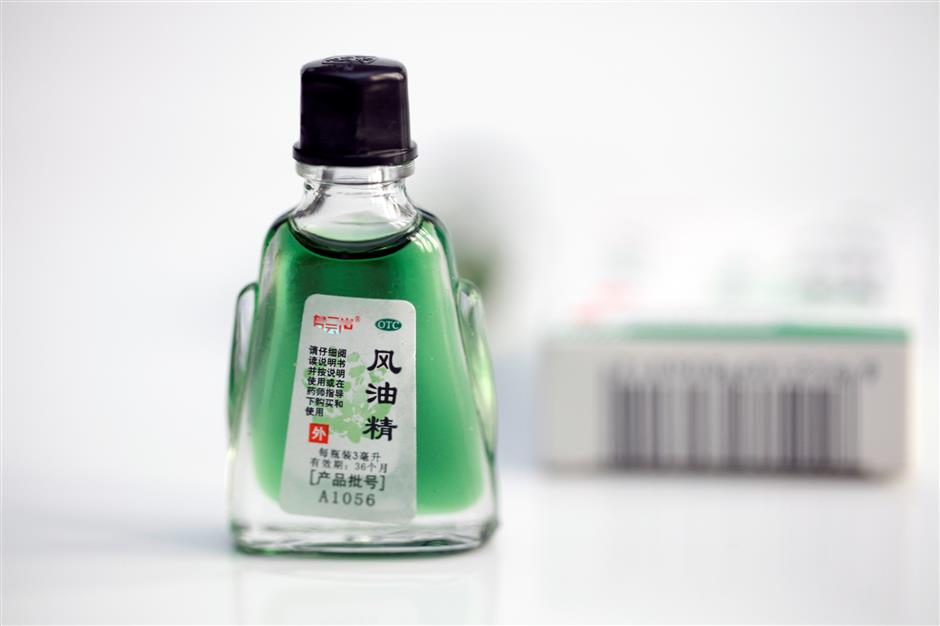
Fengyoujing (风油精)
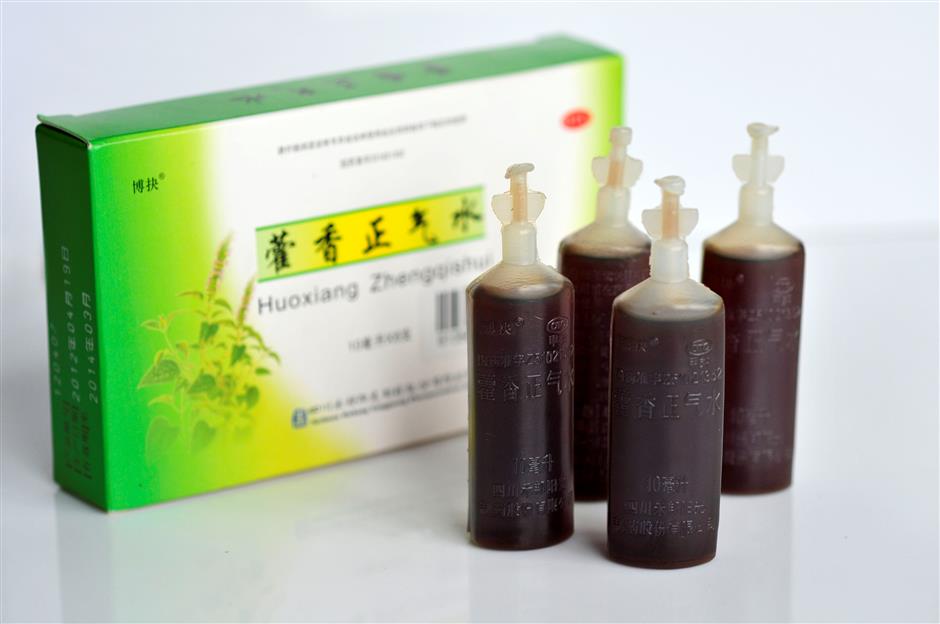
Huoxiang Zhengqi liquid
The difference between fengyoujing and qingliangyou is that the former is a liquid with spiky odor and the latter is a balm with a gentler, minty aroma. It’s important to keep both of them away from the eyes.
Huoxiang zhengqi is a classic Chinese medicine used by many Chinese households to cope with stomach flu, summer colds and heatstroke. It comes in liquid or tablet form.















